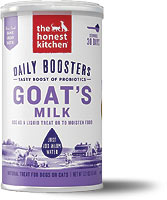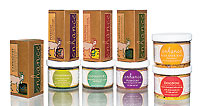The word is out! A big factor has been missed entirely in the recent awareness of Grain Free dog foods and their potential to be bad for your dog. In light of the FDA investigation of whether legume based fillers in Grain Free dog food are causing DCM in less than .01% of dogs, we want to talk to you about how you can make your dog’s meal better. Preventing as many nutritional based problems as possible.
So what did the FDA investigation miss?? Dry dog food, whether grain-free or not is not good for your dog when fed exclusively. Kibble is cooked, then cooked, then cooked and finally extruded. For most kibbles, the manufacturing process requires the food to be heated four times. That means, by the time it hits the bag, virtually all of the nutrition is gone. The big factor in this FDA investigation is Taurine, or lack of it. Taurine is an amino acid, and is most viable in fresh meat.
Nutrition is the most important thing to keep your dog healthy, by introducing some fresh foods to their diet; your dog can live a longer, happier life. At the Moab BARKery we want dog owners to discover all of the benefits of raw diets first-hand, but sometimes it isn’t that easy. Raw requires more time, more freezer space, and many times more money than kibble. Homemade raw requires a lot more research and commitment than feeding kibble does.
That means that, unfortunately not everyone has the means to switch to a completely species appropriate raw diet. Yet many owners still want to improve their dog’s health and longevity, and nutrition is the best way to do that. But you don’t have to completely switch to raw for your dog to experience some of the benefits of a fresh food diet, here is a list of the best things you can add to kibble and how they can benefit your dog.
Goat Milk
Imagine that for your entire life you could eat nothing but the same cereal, with no milk, and you could not clean your teeth either. Kibble is made the exact same way as cereal, except that they add protein and fat to the mix. Kibble is cereal for dogs except for the fact that they never get to eat anything else, and they don’t even get to pour milk on it.
Goat milk is a great way to increase the moisture of your dog’s diet, while also providing a source of great nutrition and probiotics at the same time. Goat milk has a good calcium phosphorus ratio and is also a great source of vitamins, fatty acids, enzymes, antioxidants, protein and electrolytes. Since goat milk has a smaller fat molecule and less lactose than cow’s milk, it is much easier for your dog to digest, even dogs with digestive issues or sensitive stomachs. It is also a good source of probiotics, which further benefit the digestive system and allows your dog to better absorb nutrients. It is also a great way to encourage picky or sick dogs to eat.
Primal Pet Foods and Steve’s Real Food are great brands that offer goat milk products for dogs. Found in the freezer section of the Moab BARKery, you simply defrost the milk in your refrigerator and pour over your dog’s kibble, most of these products have a shelf life of 10-15 days defrosted and up to one year frozen. The Honest Kitchen and Steve’s Real Food also offer a dehydrated goat milk product, just add water and serve.
Whole Oily Fish or Fish Oil
Studies show that obtaining more omega-3 fatty acids in the diet is beneficial for your dog’s heart, skin and coat and joint mobility. A ratio of 4:1 omega-6 to omega-3 fatty acids has been shown to be most beneficial for dogs. Many kibbles offer some omegas but they are volatile and degrade quickly. In other words fish oils will spoil easily and become rancid, which is not practical with a product like kibble that needs a long shelf life of 18 months or more.
When choosing whole fish, find something that is high in omega-3 and low in mercury. Smaller fish like sardines, anchovies and mackerel are fantastic choices. You can feed fish a couple of times a week, or even every day in smaller amounts. If you are going to use canned fish, only use the ones canned in water, no salt added and preferably whole fish, not just filets.
Primal Pet Foods have sardine formulas available in the frozen section, simply defrost the chub and feed as a topper on your dog’s kibble. If you don’t wish to handle fresh or frozen fish consider whole dried fish like the Capelin from Icelandic Plus found in the treat section.
As for fish oil, salmon, sardine, anchovy and herring oil are all good choices. If mercury exposure is a concern, avoid salmon oil and stick to the smaller fish. The Moab BARKery offers sardine and anchovy oil from Nature’s Logic and Iceland Pure Pet Products. It is best to keep fish oil refrigerated, since it can spoil easily. Whole fish can be kept in the refrigerator too, but should be frozen if you are not going to use them all within a couple of days.
Bone Broth
During the high heat processing of kibble, a significant amount of amino acids and trace minerals are lost due to denaturation. Essential amino acids and minerals will be supplemented in order to meet minimum nutrient requirements if necessary, but non-essential amino acids typically will not be, since there is not a minimum requirement that pet food companies must meet. But since obtaining non-essential amino acids in the diet has been shown to be beneficial, feeding kibble fed dogs bone broth to help make up for the amino acids that their diet is lacking is a good idea.
Bone broth is also said to be very palatable, so adding it to the diet may encourage a picky or sick dog to eat. It also adds a source of moisture to kibble, which is greatly beneficial to general health and can help prevent issues such as urinary stones or UTIs.
Primal Pet Foods produces four flavors of bone broth available in the freezer section. With key benefits including digestion and liver support, hydration and moisture, joint health, and more, supplementing with bone broth is an easy way to keep your dog hydrated and healthy. If you prefer to be able to mix bone broth as needed, consider trying the dehydrated bone broths available in the supplement section from The Honest Kitchen.
Meat
Feeding raw meat (raw-plementing) is a great way to provide fresh, unprocessed food for your dog, and this comes with many benefits. The high heat processing of kibble damages amino acids, preventing your dog from utilizing them completely. These amino acids are used in virtually every metabolic process in the body. By supplementing your dog’s kibble diet with raw, you can provide the benefits of improved protein quality, which can greatly improve your dog’s overall health. Even a replacement of 25% raw or fresh can have a big impact on your dog’s health and less of an impact on the wallet.
When introducing raw meat to your dog, take care not to cause digestive upset by feeding something too rich or in too large of an amount for your dog to handle. Best way to start is feed raw product as treats, tiny portions once or twice a day, expand from there. Some dogs have more sensitive stomachs than others, and may require digestive enzymes or probiotics during the introduction. If you are replacing a significant amount of your dog’s kibble with raw meat, you need to make sure the raw has a balanced nutritional content in order to prevent any deficiencies or excesses in the diet. Many commercial raw diets are balanced with vegetables and supplements to ensure your pet gets what they need, without all the preservatives.
Tip from the
Humane Society of Moab Valley |
Traveling with Your Pet in Canyon Country:
Practice Water Safety - Just because your dog loves the water doesn’t mean he always knows its dangers! Keep an eye on your pet around water, especially when it’s an unfamiliar place. Animals won’t know about fast-moving currents, how tired they can get if they swim out too far (or for too long), and potentially-poisonous water sources, among other things. If your pet will be in and out of water often on your trip, bring along a life-jacket for him or her, too. |
|